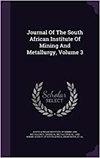四氯化钛锂热还原海绵钛的提纯:浸出条件的影响
IF 0.9
4区 材料科学
Q3 Materials Science
Journal of The South African Institute of Mining and Metallurgy
Pub Date : 2023-02-10
DOI:10.17159/2411-9717/2117/2022
引用次数: 1
摘要
CSIR-Ti工艺采用四氯化钛原料锂热还原法制备海绵钛。因此,该产品受到一系列锂和氯化物的污染。在本研究中,我们考察了粒度、温度和HCl浓度作为输入浸出变量对从粗海绵钛中去除氯化物的影响。对锂和钛的氯水化学性质进行了综述,为从海绵中浸出杂质提供了初始条件。实验结果证实,浸出和去除海绵中溶解杂质的有效性取决于浸出动力学,而浸出动力学受温度、粒度和形貌的影响。在测试的变量中,反应温度对浸出产物氧含量的影响最大。在试验条件下,盐酸浸出剂浓度的影响可以忽略不计。在1 M或0.032 M HCl中,在14°C浸出粗海绵钛(破碎后-10 mm大小的部分),得到的海绵钛产品符合ASTM商业纯1级钛的标准规范,即氧含量< 0.18质量%,氯化物含量< 0.15质量%。本文章由计算机程序翻译,如有差异,请以英文原文为准。
Purification of titanium sponge produced by lithiothermic reduction of titanium tetrachloride: Effect of leaching conditions
The CSIR-Ti process employs lithiothermic reduction of titanium tetrachloride feedstock to produce titanium sponge. The product is therefore contaminated by a range of lithium and chloride species. In this study we examine the effects of particle size, temperature, and HCl concentration as input leaching variables on the removal of chlorides from the crude titanium sponge. A review of the aqueous chloride chemistry of Li and Ti provided initial conditions for leaching of impurity species from the sponge. Experimental results confirm that the effectiveness of leaching and removal of dissolved impurities from the sponge are dependent on leaching kinetics, which are influenced by temperature, particle size, and morphology. Of the variables tested, reaction temperature had the strongest influence on the oxygen content of the leached product. The HCl lixiviant concentration had a negligible effect under the conditions tested. Leaching of crude titanium sponge (-10 mm size fraction after crushing) at 14°C in either 1 M or 0.032 M HCl yielded a titanium sponge product that met the ASTM standard specification for commercially pure Grade 1 titanium, i.e., oxygen content < 0.18 mass% and chloride content < 0.15 mass%.
求助全文
通过发布文献求助,成功后即可免费获取论文全文。
去求助
来源期刊
CiteScore
1.50
自引率
11.10%
发文量
61
审稿时长
4-8 weeks
期刊介绍:
The Journal serves as a medium for the publication of high quality scientific papers. This requires that the papers that are submitted for publication are properly and fairly refereed and edited. This process will maintain the high quality of the presentation of the paper and ensure that the technical content is in line with the accepted norms of scientific integrity.

 求助内容:
求助内容: 应助结果提醒方式:
应助结果提醒方式:


